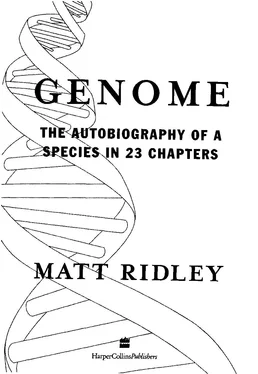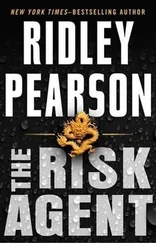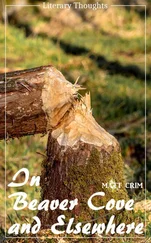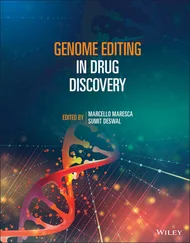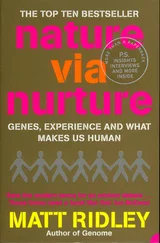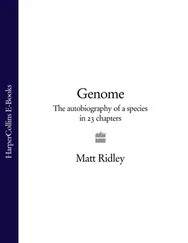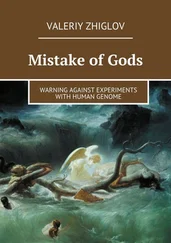Genome - Matt Ridley
Здесь есть возможность читать онлайн «Genome - Matt Ridley» — ознакомительный отрывок электронной книги совершенно бесплатно, а после прочтения отрывка купить полную версию. В некоторых случаях можно слушать аудио, скачать через торрент в формате fb2 и присутствует краткое содержание. Жанр: Старинная литература, на английском языке. Описание произведения, (предисловие) а так же отзывы посетителей доступны на портале библиотеки ЛибКат.
- Название:Matt Ridley
- Автор:
- Жанр:
- Год:неизвестен
- ISBN:нет данных
- Рейтинг книги:5 / 5. Голосов: 1
-
Избранное:Добавить в избранное
- Отзывы:
-
Ваша оценка:
- 100
- 1
- 2
- 3
- 4
- 5
Matt Ridley: краткое содержание, описание и аннотация
Предлагаем к чтению аннотацию, описание, краткое содержание или предисловие (зависит от того, что написал сам автор книги «Matt Ridley»). Если вы не нашли необходимую информацию о книге — напишите в комментариях, мы постараемся отыскать её.
Matt Ridley — читать онлайн ознакомительный отрывок
Ниже представлен текст книги, разбитый по страницам. Система сохранения места последней прочитанной страницы, позволяет с удобством читать онлайн бесплатно книгу «Matt Ridley», без необходимости каждый раз заново искать на чём Вы остановились. Поставьте закладку, и сможете в любой момент перейти на страницу, на которой закончили чтение.
Интервал:
Закладка:
None the less, some patterns emerge. By gathering data on the common, known variations in simple genes - the 'classical polymorphisms' — and doing clever statistical tricks called principal-components analysis with the resulting data, Cavalli-Sforza uncovered five different contour maps of gene frequencies within Europe. One was a steady gradient from south-east to north-west, which may reflect the original spread of neolithic farmers into Europe from the Middle East: it echoes almost exactly the archaeo-logical data on the spread of agriculture into Europe beginning about 9,500 years ago. This accounts for twenty-eight per cent of the genetic variation in his sample. The second contour map was a steep hill to the north-east, reflecting the genes of the Uralic speakers, and accounting for twenty-two per cent of genetic variation. The third, half as strong, was a concentration of genetic frequencies radiating out from the Ukrainian steppes, reflecting the expansion of P R E - H I S T O R Y 1 8 9
pastoral nomads from the steppes of the Volga-Don region in about 3,000 B C. The fourth, weaker still, peaks in Greece, southern Italy and western Turkey, and probably shows the expansion of Greek peoples in the first and second millennium B C . Most intriguing of all, the fifth is a steep little peak of unusual genes coinciding almost exactly with the greater (original) Basque country in northern Spain and southern France. The suggestion that Basques are survivors of the pre-neolithic peoples of Europe begins to seem plausible.1
Genes, in other words, support the evidence from linguistics that expansions and migrations of people with novel technological skills have played a great part in human evolution. The gene maps are fuzzier than the linguistic maps, but this enables them to be subtler.
On a smaller scale, too, they can pick out features that coincide with linguistic regions. In Cavalli-Sforza's native Italy, for instance, there are genetic regions that coincide with the ancient Etruscans, the Ligurians of the Genoa region (who spoke a non-Indo-European ancient language) and the Greeks of southern Italy. The message is plain. Languages and peoples do, to some extent, go together.
Historians speak happily of neolithic people, or herdsmen, or Magyars, or whoever, 'sweeping into' Europe. But what exactly do they mean? Do they mean expanding, or migrating? Do these newcomers displace the people already there? Do they kill them, or merely out-breed them? Do they marry their women and kill their men? Or do their technology, language and their culture merely spread by word of mouth and become adopted by the natives? All models are possible. In the case of eighteenth-century America, the native Americans were displaced almost completely by whites —
both in genetic and linguistic terms. In seventeenth-century Mexico, something much more like mixing happened. In nineteenth-century India, the language of English spread, as a whole procession of Indo-European languages such as Urdu/Hindi had done before, but in this case with very little genetic admixture.
The genetic information allows us to understand which of these models applies best to pre-history. The most plausible way to account for a genetic gradient that grows steadily more dilute towards the 1 9 0 G E N O M E
north-west is to imagine a spread of neolithic agriculture by diffusion.
That is, the neolithic farmers from the south-east must have mixed their genes with those of the 'natives', the influence of the invaders'
genes growing steadily less distinct the further they spread. This points to intermarriage. Cavalli-Sforza argues that the male cultivators probably married the local hunter-gatherer women, but not vice versa, because that is exactly what happens between the pygmies and their cultivator neighbours in central Africa today. Cultivators, who can afford more polygamy than hunter-gatherers, and tend to look down on foraging people as primitive, do not allow their own women to marry the foragers, but the male cultivators do take forager wives.
Where invading men have imposed their language upon a land but married the local women, there should be a distinct set of Y-chromosome genes but a less distinct set of other genes. This is the case in Finland. The Finns are genetically no different from the other western Europeans who surround them, except in one notable respect: they have a distinct Y chromosome, which looks much more like the Y chromosome of northern Asian people. Finland is a place where the Uralic language and the Uralic Y chromosomes were imposed on a genetically and linguistically Indo-European population some time in the distant past.2
What has all this to do with chromosome 13 ? It so happens that there is a notorious gene called BRCA2 on chromosome 13 and it, too, helps to tell a story of genealogy. BRCA2 was the second
'breast cancer gene' to be discovered, in 1994. People with a certain, fairly rare version of BRCA2 were found to be much more likely to develop breast cancer than is usually the case. The gene was first located by studying Icelandic families with a high incidence of breast cancer. Iceland is the perfect genetic laboratory because it was settled by such a small group of Norwegians around AD 900, and has seen so little immigration since. Virtually all of the 270,000 Icelanders trace their descent in all lines from those few thousand Vikings who reached Iceland before the little ice age. Eleven hundred years of chilly solitude and a devastating fourteenth-century plague have rendered the island so inbred that it is a happy genetic hunting P R E - H I S T O R Y 1 9 1
ground. Indeed, an enterprising Icelandic scientist working in America returned to his native country in recent years precisely to start a business helping people to track down genes.
Two Icelandic families with a history of frequent breast cancer can be traced back to a common ancestor born in 1711. They both have the same mutation, a deletion of five 'letters' after the 999th
'letter' of the gene. A different mutation in the same gene, the deletion of the 6,174th 'letter', is common in people of Ashkenazi Jewish descent. Approximately eight per cent of Jewish breast-cancer cases under the age of forty-two are attributable to this one mutation, and twenty per cent to a mutation in BRCA1, a gene on chromosome 17. Again, the concentration points to past inbreeding, though not on the Icelandic scale. Jewish people retained their genetic integrity by adding few converts to the faith and losing many people who married outsiders. As a result, the Ashkenazim in particular are a favourite people for genetic studies. In the United States the Committee for the Prevention of Jewish Genetic Disease organises the testing of schoolchildren's blood. When matchmakers are later considering a marriage between two young people, they can call a hotline and quote the two anonymous numbers they were each assigned at the testing. If they are both carriers of the same mutation, for Tay-Sachs disease or cystic fibrosis, the committee advises against the marriage. The practical results of this voluntary policy —
which was criticised in 1993 by the New York Times as eugenic — are already impressive. Cystic fibrosis has been virtually eliminated from the Jewish population in the United States.3
So genetic geography is of more than academic interest. Tay-Sachs disease is the result of a genetic mutation comparatively common in Ashkenazi Jews, for reasons that will be familiar from chromosome 9. Tay—Sachs carriers are somewhat protected against tuberculosis, which reflects the genetic geography of Ashkenazi Jews.
Crammed into urban ghettos for much of the past few centuries, the Ashkenazim were especially exposed to the 'white death' and it is little wonder that they acquired some genes that offer protection, even at the expense of lethal complications for a few.
Читать дальшеИнтервал:
Закладка:
Похожие книги на «Matt Ridley»
Представляем Вашему вниманию похожие книги на «Matt Ridley» списком для выбора. Мы отобрали схожую по названию и смыслу литературу в надежде предоставить читателям больше вариантов отыскать новые, интересные, ещё непрочитанные произведения.
Обсуждение, отзывы о книге «Matt Ridley» и просто собственные мнения читателей. Оставьте ваши комментарии, напишите, что Вы думаете о произведении, его смысле или главных героях. Укажите что конкретно понравилось, а что нет, и почему Вы так считаете.
